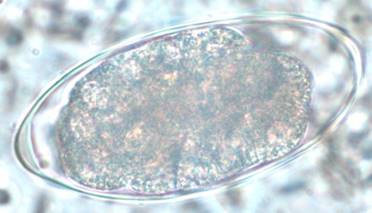|
Trichostrongylidae
Trichostrongylidae is a family of nematode in the suborder Strongylida. Genera Genera: * '' Africanastrongylus'' Hoberg, Abrams & Ezenwa, 2008 * '' Amidostomoides'' Petrova, 1987 * '' Arnfieldia'' Sarwar, 1957 * '' Ashworthius'' Le Roux, 1930 * '' Batrachostrongylus'' Yuen, 1963 * '' Biogastranema'' Rohrbacher & Ehrenford, 1954 * '' Camelostrongylus'' Orloff, 1933 * '' Chabaudstrongylus'' Durette-Desset & Denke, 1978 * '' Cnizostrongylus'' Chabaud, Durette-Desset & Houin, 1967 * '' Cooperia'' Ransom, 1907 * '' Durettestrongylus'' Guerrero, 1983 * '' Filarinema'' Mönnig, 1929 * '' Gazellostrongylus'' Yeh, 1956 * '' Graphidiella'' Olsen, 1948 * '' Graphidioides'' Cameron, 1923 * ''Graphidium'' Railliet & Henry, 1909 * '' Graphinema'' Guerrero & Rojas, 1969 * ''Haemonchus'' Cobb, 1898 * '' Hamulonema'' Hoberg & Abrams, 2008 * '' Heligosomoides'' * '' Hexapapillostomum'' Lomakin, 1991 * '' Hoazinstrongylus'' Magalhães Pinto & Corrêa Gomes, 1985 * '' Hyostrongylus'' Hall, 1921 * '' I ... [...More Info...] [...Related Items...] OR: [Wikipedia] [Google] [Baidu] |
Graphidium
''Graphidium'' is a monotypic genus of nematodes belonging to the family Trichostrongylidae. The only species is ''Graphidium strigosum''. The species is found in Europe, Southern America. References {{Taxonbar, from1=Q18520377, from2=Q5267625 Trichostrongylidae Nematode genera Monotypic animal genera ... [...More Info...] [...Related Items...] OR: [Wikipedia] [Google] [Baidu] |
Trichostrongylus
''Trichostrongylus'' species are nematodes (round worms), which are ubiquitous among herbivores worldwide, including cattle, sheep, donkeys, goats, deer, and rabbits.Garcia LS, editor. Diagnostic Medical Parasitology. 5 ed. Washington, DC: ASM Press; 2007.Strickland GT, editor. Hunter's Tropical Medicine and Emerging Infectious Diseases. 8 ed. Philadelphia, PA: WB Saunders Company; 2000. At least 10 ''Trichostrongylus'' species have been associated with human infections. Infections occur via ingestion of infective larvae from contaminated vegetables or water. Epidemiological studies indicate a worldwide distribution of ''Trichostrongylus'' infections in humans, with the highest prevalence rates observed in individuals from regions with poor sanitary conditions, in rural areas, or who are farmers / herders. Human infections are most prevalent in the Middle East and Asia, with a worldwide estimated prevalence of 5.5 million people. Life cycle Eggs are passed through the feces of ... [...More Info...] [...Related Items...] OR: [Wikipedia] [Google] [Baidu] |
Haemonchus
''Haemonchus'' is a genus of nematodes belonging to the family Trichostrongylidae. They are abomasal parasites that cause anemia, followed by white eye disease. The genus has cosmopolitan distribution. Species: *'' Haemonchus contortus'' *''Haemonchus longistipes'' *''Haemonchus placei'' *''Haemonchus similis ''Haemonchus'' is a genus of nematodes belonging to the family Trichostrongylidae. They are abomasal parasites that cause anemia, followed by white eye disease. The genus has cosmopolitan distribution. Species: *''Haemonchus contortus'' *''H ...'' References {{Taxonbar, from=Q5891254 Nematodes ... [...More Info...] [...Related Items...] OR: [Wikipedia] [Google] [Baidu] |
Longistrongylus
''Longistrongylus'' is a genus of nematodes belonging to the family Trichostrongylidae. Species: * ''Longistrongylus muraschkinzevi ''Longistrongylus'' is a genus of nematodes belonging to the family Trichostrongylidae Trichostrongylidae is a family of nematode in the suborder Strongylida. Genera Genera: * '' Africanastrongylus'' Hoberg, Abrams & Ezenwa, 2008 * '' Amidosto ...'' (Shulz & Kadenatsii, 1950) References Nematodes {{rhabditida-stub ... [...More Info...] [...Related Items...] OR: [Wikipedia] [Google] [Baidu] |
Strongylida
The Strongylida suborder includes many of the important nematodes found in the gastrointestinal tracts of ruminants, horses, and swine, as well as the lungworms of ruminants and the hookworms of dogs and cats. Taxonomy This suborder includes (superfamily - included families): *Ancylostomatoidea ** Ancylostomatidae * Diaphanocephaloidea **Diaphanocephalidae * Heligmosomoidea ** Heligmosomidae * Metastrongyloidea **Angiostrongylidae **Crenosomatidae **Filaroididae **Metastrongylidae **Protostrongylidae **Pseudaliidae ** Syngamidae * Molineoidea ** Molineidae * Strongyloidea **Chabertiidae **Cloacinidae ** Deletrocephalidae ** Stephanuridae **Strongylidae *Trichostrongyloidea ** Amidostomatidae **Cooperiidae ** Dictyocaulidae ** Dromaeostrongylidae ** Haemonchidae ** Heligmonellidae **Heligmosomatidae ** Herpetostrongylidae ** Mackerrasrtongylidae ** Nicollinidae **Trichostrongylidae Major superfamilies Diaphanocephaloidea These are parasites of the digestive tracts of terrestr ... [...More Info...] [...Related Items...] OR: [Wikipedia] [Google] [Baidu] |
